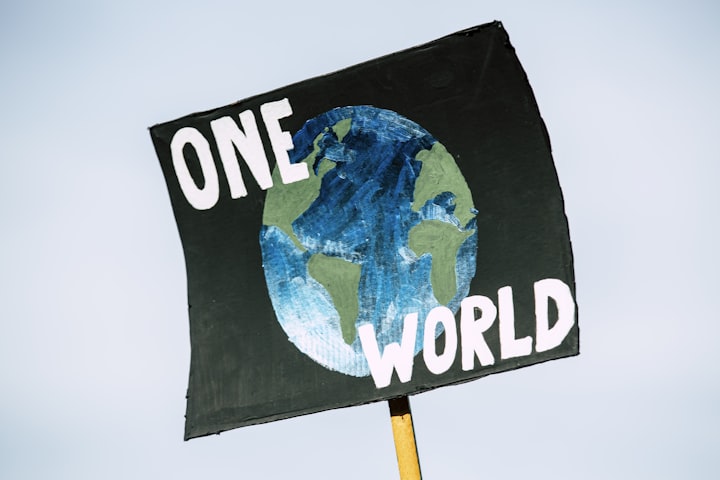Earth Biography
Earth is the third planet from the Sun and the only astronomical object known to harbor life. While large amounts of water can be found throughout the Solar System, only Earth sustains liquid surface water. About 71% of Earth's surface is made up of the ocean, dwarfing Earth's polar ice, lakes and rivers. The remaining 29% of Earth's surface is land, consisting of continents and islands.

Earth's atmosphere consists mostly of nitrogen and oxygen. More solar energy is received by tropical regions than polar regions and is redistributed by atmospheric and ocean circulation. Water vapor is widely present in the atmosphere and forms clouds that cover most of the planet. Greenhouse gases in the atmosphere like carbon dioxide (CO2) trap a part of the energy from the Sun close to the surface. A region's climate is governed by latitude, but also by elevation and proximity to moderating oceans. Severe weather, such as tropical cyclones, thunderstorms, and heatwaves, occurs in most areas and greatly impacts life.
Earth is an ellipsoid with a circumference of about 40,000 km. It is the densest planet in the Solar System. Of the four rocky planets, it is the largest and most massive. Earth is about eight light minutes away from the Sun and orbits it, taking a year (about 365.25 days) to complete one revolution. Earth rotates around its own axis in a day.
Etymology
The modern English word Earth developed, via Middle English, from an Old English noun most often spelled eorðe.[26] It has cognates in every Germanic language, and their ancestral root has been reconstructed as *erþō. In its earliest attestation, the word eorðe was already being used to translate the many senses of Latin terra and Greek γῆ gē: the ground, its soil, dry land, the human world, the surface of the world (including the sea), and the globe itself. As with Roman Terra/Tellūs and Greek Gaia, Earth may have been a personified goddess in Germanic paganism: late Norse mythology included Jörð ('Earth'), a giantess often given as the mother of Thor.[27]
Formation
Artist's impression of the early Solar System's planetary disk
The oldest material found in the Solar System is dated to 4.5682+0.0002
−0.0004 Ga (billion years) ago.[37] By 4.54±0.04 Ga the primordial Earth had formed.[38] The bodies in the Solar System formed and evolved with the Sun. In theory, a solar nebula partitions a volume out of a molecular cloud by gravitational collapse, which begins to spin and flatten into a circumstellar disk, and then the planets grow out of that disk with the Sun. A nebula contains gas, ice grains, and dust (including primordial nuclides). According to nebular theory, planetesimals formed by accretion, with the primordial Earth being estimated as likely taking anywhere from 70 to 100 million years to form.[39]
Estimates of the age of the Moon range from 4.5 Ga to significantly younger.[40] A leading hypothesis is that it was formed by accretion from material loosed from Earth after a Mars-sized object with about 10% of Earth's mass, named Theia, collided with Earth.[41]
Geological history
Main article: Geological history of Earth
Carboniferous rocks that were folded, uplifted and eroded during the orogeny that completed the formation of the Pangaea supercontinent, before deposition of the overlying Triassic strata, in the Algarve Basin, which marked the start of its break-up
Earth's atmosphere and oceans were formed by volcanic activity and outgassing.[45] Water vapor from these sources condensed into the oceans, augmented by water and ice from asteroids, protoplanets, and comets.[46] Sufficient water to fill the oceans may have been on Earth since it formed.[47] In this model, atmospheric greenhouse gases kept the oceans from freezing when the newly forming Sun had only 70% of its current luminosity.[48] By 3.5 Ga, Earth's magnetic field was established, which helped prevent the atmosphere from being stripped away by the solar wind.[49]
Future
Main article: Future of Earth
See also: Global catastrophic risk
Because carbon dioxide (CO2) has a long lifespan in the atmosphere, moderate human CO2 emissions may postpone the next glacial inception by 100,000 years.[77]
Earth's expected long-term future is tied to that of the Sun. Over the next 1.1 billion years, solar luminosity will increase by 10%, and over the next 3.5 billion years by 40%.[78] Earth's increasing surface temperature will accelerate the inorganic carbon cycle, reducing CO2 concentration to levels lethally low for plants (10 ppm for C4 photosynthesis) in approximately 100–900 million years.[79][80] The lack of vegetation will result in the loss of oxygen in the atmosphere, making animal life impossible.
Surface
Main articles: Earth's crust, Landform, and Extreme points of Earth
See also: Planetary surface and Geomorphology
Current Earth without water, elevation greatly exaggerated (click/enlarge to "spin" 3D-globe).
The total surface area of Earth is about 510 million km2 (197 million sq mi).[15] Of this, 70.8%,[15] or 361.13 million km2 (139.43 million sq mi), is below sea level and covered by ocean water.[121] Below the ocean's surface are much of the continental shelf, mountains, volcanoes,[87] oceanic trenches, submarine canyons, oceanic plateaus, abyssal plains, and a globe-spanning mid-ocean ridge system. The remaining 29.2%, or 148.94 million km2 (57.51 million sq mi), not covered by water has terrain that varies greatly from place to place and consists of mountains, deserts, plains, plateaus, and other landforms. The elevation of the land surface varies from the low point of −418 m (−1,371 ft) at the Dead Sea, to a maximum altitude of 8,848 m (29,029 ft) at the top of Mount Everest.





Comments
There are no comments for this story
Be the first to respond and start the conversation.